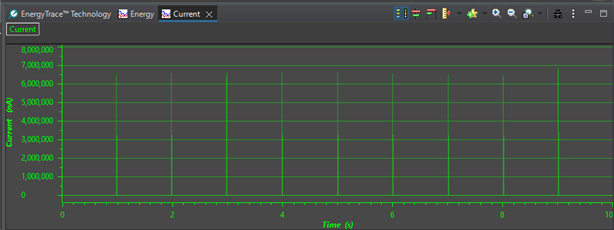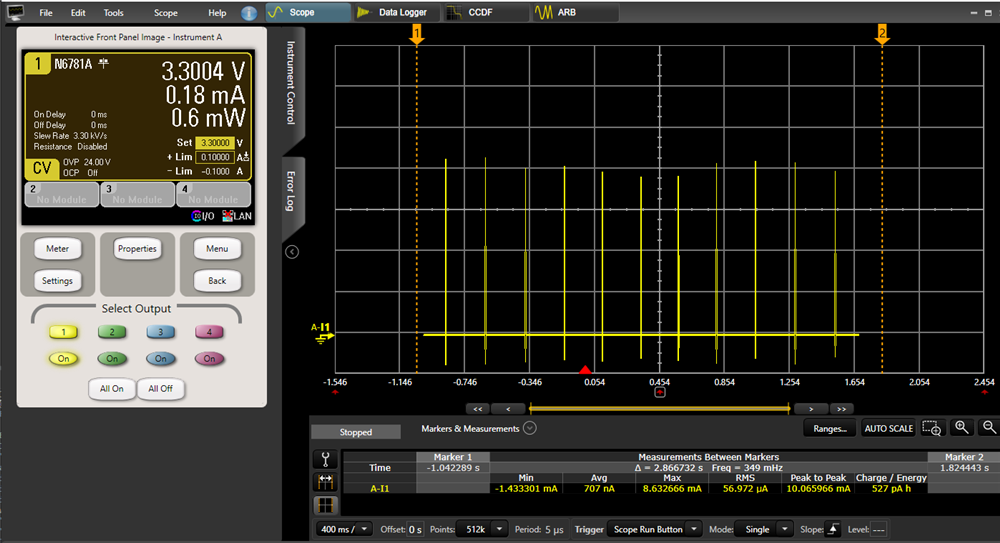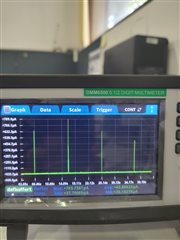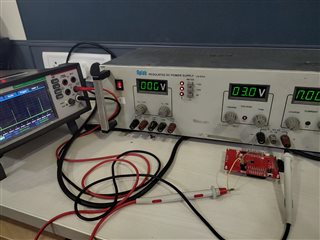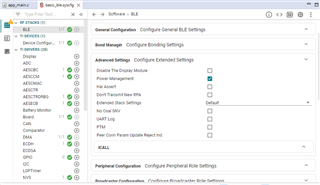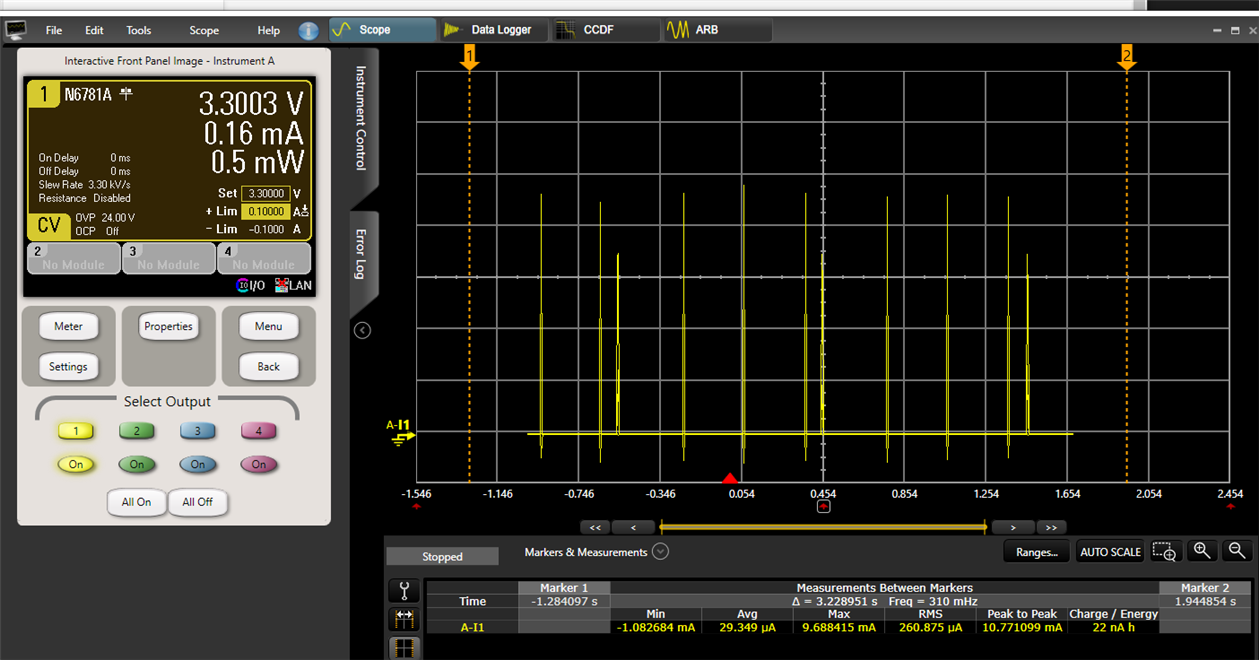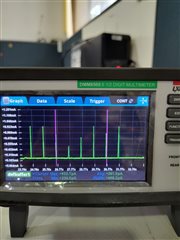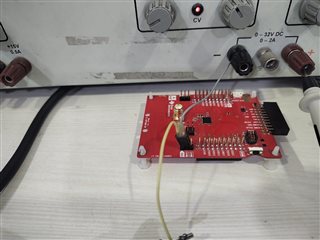Other Parts Discussed in Thread: SYSCONFIG
Hi
I'm working on a low-power application and for the initial testing, I have loaded the basic_ble example code, and I have disabled all the peripherals. The standby current Im receiving is >60uA which is very unlikely as per the standby current referred to in the datasheet. The SDK version is simplelink_lowpower_f3_sdk_7_10_00_35. The loaded peripheral code is advertising at an interval of 10s.
The measurement of current is made using an LP-EM-CC2340R5 connected to a DC analyzer.
Can anyone suggest ways to reduce this current consumption?


